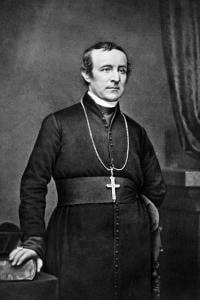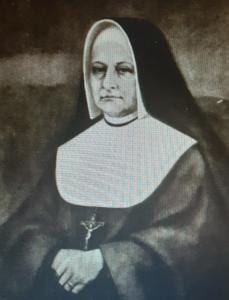 Charity Not Enough
Charity Not Enough
Today we focus on a brighter spot in American Catholic history: the Church and the Civil Rights Movement. Many Catholics were late to the movement, while some were early. By the time Dr. Martin Luther King, Jr., was organizing marches nationwide, it was clear to Catholics that individual charity, though admirable, didn’t suffice. The underlying racist system had to be challenged and overcome.
Besides the Josephites, many other priests and religious dedicated their lives to the Black community. St. Katharine Drexel founded over fifty schools for African Americans, including Xavier University in New Orleans, the nation’s only historically Black Catholic college. In Brooklyn, Father Bernard Quinn (who’s also being considered for sainthood) founded several schools, parishes and orphanages for Black Catholics across Long Island. There were countless other examples of similar people in cities across the nation.
“Racism is a God-damned Thing”
But beyond charitable endeavors, there was still the question of racism inside and outside the Church. Beginning in the 1920’s, groups like the Federated Colored Catholics and the Catholic Interracial Council took steps to address this, but as a whole the Church was slow to get involved. Individual Catholics might not publicly endorse segregation, but they certainly accepted it well into the sixties. Still, it’s important to note there were always exceptions.
Among them was a U.S. cavalry officer turned Jesuit priest: John Markoe. Starting in the 1920’s, for nearly fifty years he led sit-ins, marches, and boycotts throughout the Midwest. For helping desegregate St. Louis University, a racist archbishop banned Markoe from “his” archdiocese. But for Markoe, racism was “a God-damned thing. And that’s two words: God-damned.” As race riots swept America at the time of his death in 1967, he told fellow Jesuits never to “give an inch.” NAACP leader Roy Wilkins said that Markoe “fought the Civil Rights battle long before it became respectable, or even popular.”
The Bishops and Racism
In November 1958, the American bishops issued a statement condemning segregation, calling it a moral and a religious issue that “cannot be reconciled with the Christian view of our fellow man.” Their statement concluded:
For this reason we hope and earnestly pray that responsible and sober minded Americans of all religious faiths, in all areas of our land, will seize the mantle of leadership from the agitator and the racist. All must act quietly, courageously, and prayerfully before it is too late… Clearly, then, these problems are vital and urgent… For the sake of generations of future Americans, and indeed, all of humanity, we cannot fail.
Two years earlier, in New Orleans, Archbishop Joseph Rummel wrote in a pastoral letter: “Racial segregation as such is morally wrong and sinful because it is a denial of the unity and solidarity of the human race.” Beginning in 1951, Rummel started to desegregate schools and churches. In 1955, he placed a white parish under interdict for refusing to receive a Black priest. Later in 1962, he excommunicated several white Catholics, including a prominent judge, Leander Perez, for promoting segregation.
Time for Action
By this point, as the bishops pointed out, the time had come for action. In an article on Catholics at Selma, Professor Paul Murray of Siena College describes Dr. King asking longtime activist Father Paul Ouellet, a white priest working in Selma:
“Isn’t it delightful that we are getting all kinds of people coming down, and we’re even getting priests and sisters?”
“Well, it’s about time they got here.”
“Oh, Father, don’t say that. The important thing is that they are here.”
While Church leaders had always stressed charity towards all, they hadn’t addressed institutional racism. People like John Markoe and others had long championed racial justice, but it was indeed a long time before the whole Church caught up. In the spirit of Vatican II, it began to read “the signs of the times.” And as we noted earlier, it began to redsicover the true meaning of the word “Catholic”: “universal.”
(Photo Source: Wikimedia Commons)











